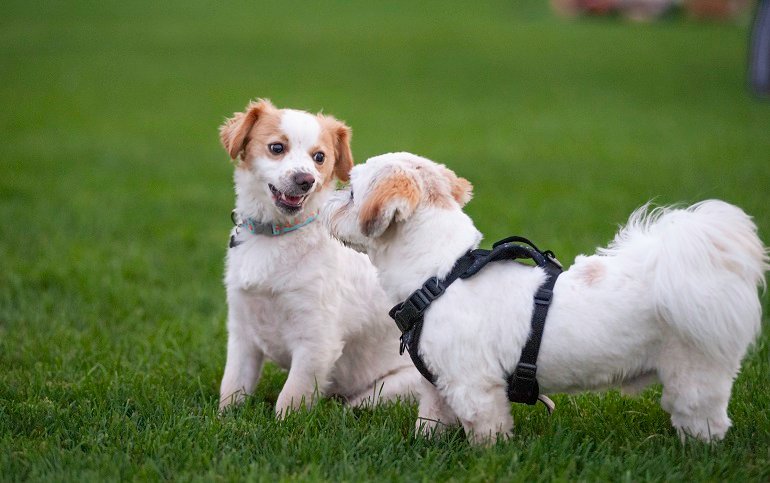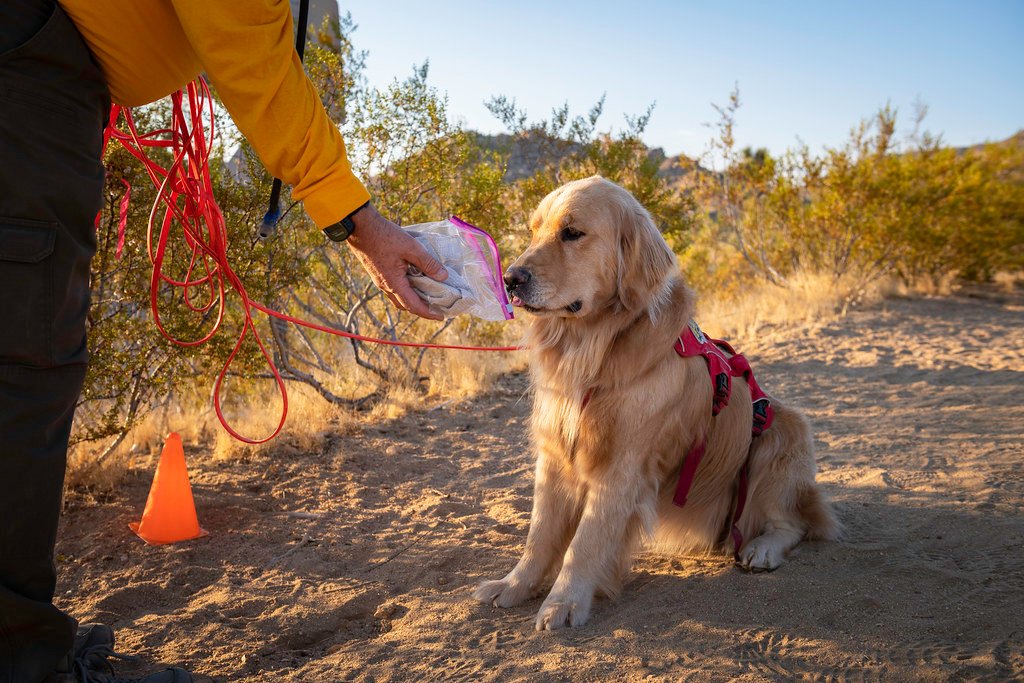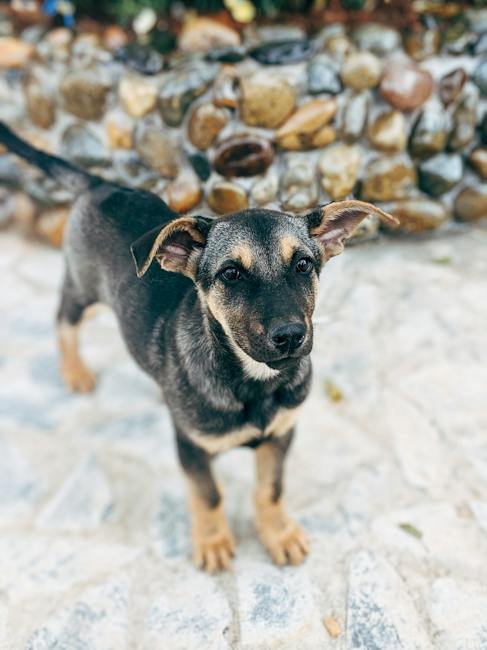In the vast wilderness where every second counts, amidst the deafening silence and the dense undergrowth, there exists a group of unsung heroes who possess an unwavering loyalty, an indomitable spirit, and an uncanny ability to chart the uncharted—search and rescue dogs. Stepping into their world of dedication and adventure, we unravel the captivating story of these four-legged heroes and their tireless trainers, shedding light on the boundless potential of canine companionship in the most trying of circumstances. Brace yourself for an extraordinary journey as we delve into the realm of dog training for search and rescue, where ordinary paws transform into symbols of hope, bravery, and unwavering determination.
Table of Contents
- Dog Training for Search and Rescue: Heroes with Paws
- Exploring the Vital Role of Canine Search and Rescue Teams
- A Deep Dive into Training Techniques for Search and Rescue Dogs
- Building a Strong Bond: The Key to Effective Search and Rescue Dog Training
- Optimizing Canine Abilities Through Targeted Search and Rescue Training Techniques
- Practical Tips and Recommendations for Training Successful Search and Rescue Dogs
- Q&A
- Future Outlook

Dog Training for Search and Rescue: Heroes with Paws
Dog training for search and rescue is a remarkable display of the bond between humans and their four-legged companions. These heroes with paws are specially trained to navigate treacherous terrains and locate missing persons, often saving lives in the process.
While dog training methods can vary, there are a few key skills that are essential for search and rescue dogs. These amazing canines undergo rigorous training to develop their ability to track scents, navigate through challenging environments, and communicate effectively with their handlers.
Skills necessary for search and rescue dogs:
- Scent tracking: Using their exceptional olfactory senses, these dogs can detect and follow scents left by missing persons across various landscapes, such as forests, mountains, or urban areas.
- Obstacle navigation: Search and rescue dogs are trained to maneuver through difficult obstacles, including rubble, fallen trees, or even collapsed buildings.
- Communication: These heroes communicate with their handlers in a variety of ways, such as barking to indicate a successful find, or using specific body language cues to convey their findings.
- Resilience and endurance: Search and rescue missions can be physically and mentally demanding. These dogs must be trained to endure long hours, harsh weather conditions, and challenging circumstances without losing focus on their task.
It’s important to recognize and appreciate the immense dedication and hard work that goes into training these remarkable canine heroes. With their unwavering loyalty and extraordinary skills, search and rescue dogs continue to play a vital role in saving lives and bringing hope to those in distress.

Exploring the Vital Role of Canine Search and Rescue Teams
Canine search and rescue teams play an essential and often life-saving role in disaster response and recovery operations. These remarkable teams consist of highly trained dogs and their dedicated handlers, working tirelessly to locate missing persons, provide relief, and bring hope to the most challenging situations.
Here are some key aspects that highlight the significance of canine search and rescue teams:
- Sensitivity and Specialized Skills: Canine search and rescue dogs possess an extraordinary sense of smell, enabling them to detect human scents even when buried beneath debris or hidden in vast areas. They undergo rigorous training that enhances their inherent abilities, allowing them to traverse difficult terrain with ease and respond rapidly to emergency situations.
- Unmatched Efficiency: These furry heroes can cover vast areas in record time, drastically reducing the search and rescue operation duration. With their agility and speed, they can access areas inaccessible to human searchers, making them invaluable in locating survivors more swiftly.
- Emotional Support: In times of distress, the presence of a search and rescue dog can provide comfort and emotional support to survivors and victims’ families, helping alleviate anxiety and stress during challenging times.
- Public Safety and Preparedness: Canine search and rescue teams contribute to the overall safety and preparedness of communities by conducting regular training exercises and being readily available during natural disasters, industrial accidents, or other emergencies. Their presence and expertise ensure a prompt and organized response, saving lives and minimizing the impact of unfortunate events.
When disaster strikes, canine search and rescue teams become a beacon of hope, offering their skills, perseverance, and unwavering loyalty to aid those in need. Their unwavering dedication serves as a reminder of the invaluable contribution that these dynamic teams make to society.

A Deep Dive into Training Techniques for Search and Rescue Dogs
When it comes to training search and rescue dogs, the techniques used play a crucial role in their success in finding and rescuing missing persons. This deep dive into various training techniques will shine a light on the skills and methods that handlers employ to prepare these heroic canines for their life-saving missions.
1. Scent Detection:
- Target Odor Training: Search and rescue dogs are trained to identify specific scents associated with missing individuals. This is done using target odor training, where dogs are exposed to the scent and rewarded when they successfully recognize and alert their handler to its presence.
- Discrimination Training: Once dogs have mastered target odors, discrimination training helps them differentiate between different scents. This allows them to focus on locating the scent associated with the missing person amidst other distractions.
2. Agility and Endurance:
SAR dogs must navigate challenging terrain and cover vast areas during their search missions. Therefore, agility and endurance training are essential.
- Obstacle Course Training: Dogs undergo rigorous obstacle course training to improve their agility, balance, and ability to overcome obstacles they may encounter in the field.
- Physical Conditioning: Regular physical conditioning exercises such as long-distance running, swimming, and hiking help build endurance and improve their overall fitness levels.
3. Search and Rescue Techniques:
- Area Search: Dogs are trained to systematically search designated areas, employing a methodical pattern to cover the ground effectively.
- Article Search: This technique teaches dogs to locate and indicate the presence of specific items, such as clothing, to aid in finding missing individuals.
- Tracking: Dogs are trained to track scents left behind by missing persons, following their path to lead search teams to them.
These are just a few examples of the training techniques involved in preparing search and rescue dogs to perform their lifesaving duties. The dedication and expertise of handlers and trainers ensure that these remarkable dogs are equipped with the skills and abilities needed to bring hope and relief to those in need.
Building a Strong Bond: The Key to Effective Search and Rescue Dog Training
When it comes to search and rescue operations, the bond between a handler and a search and rescue dog is paramount. An effective search and rescue dog training program revolves around fostering a strong and trusting connection between the two. Let’s explore some essential elements to cultivate this special bond:
1. Communication:
Clear and effective communication is the foundation of any successful relationship. In search and rescue dog training, handlers and dogs must develop a unique language that goes beyond verbal cues. Handlers learn to interpret their dog’s body language, while dogs become attuned to their handler’s signals. This seamless communication ensures that the duo can work together harmoniously during rescue missions.
2. Mutual Trust:
Trust is an indispensable component of the handler-dog bond. Handlers need to instill a sense of confidence in their search and rescue dogs, pushing them to challenge their limits without fear. Likewise, dogs must trust their handlers to guide them through unfamiliar and potentially dangerous situations. Through rigorous training exercises and positive reinforcement, trust gradually builds, enabling the duo to overcome obstacles with unwavering unity.
3. Team Building:
Training search and rescue dogs is not solely about individual skills; it’s about fostering teamwork. Handlers and dogs must learn to complement each other’s strengths and weaknesses. By promoting collaboration and synergy, they can maximize their effectiveness in critical situations. Team building activities such as obstacle courses and simulated search missions help strengthen the bond between handler and dog, ensuring they become an unstoppable force in search and rescue operations.
In conclusion, building a strong bond between handler and search and rescue dog is key to their success as a team. Effective communication, mutual trust, and team building activities form the pillars of this special connection. Through dedication, patience, and training, handlers and their dogs can forge an unbreakable bond that saves lives and makes a remarkable difference in search and rescue efforts.
Optimizing Canine Abilities Through Targeted Search and Rescue Training Techniques
Search and rescue dogs play a crucial role in locating missing individuals, providing essential aid in disaster-stricken areas, and aiding law enforcement agencies. To enhance the effectiveness of these remarkable canines, targeted training techniques can be employed to optimize their abilities and ensure successful outcomes in various scenarios.
Developing Scent Discrimination:
- Canines possess an exceptional sense of smell, making them ideal for search and rescue missions. Training methods that focus on scent discrimination allow dogs to differentiate between different odors efficiently. By introducing specific scents and gradually advancing to complex scent identification exercises, search dogs can accurately locate missing persons even in challenging environments.
- Utilizing Positive Reinforcement:
Positive reinforcement is a core method in training dogs for any purpose, including search and rescue tasks. It involves rewarding desired behaviors to reinforce them. In search and rescue training, rewards such as treats, toys, or verbal praise are essential to keep the dog motivated and engaged. This technique helps the canine associate the desired behavior with a positive consequence, ensuring its consistent performance in the field.
Implementing Realistic Simulations:
Exposing search and rescue dogs to realistic training scenarios is vital for their success in the field. Simulations mimic real-life situations, enhancing the dog’s ability to navigate various challenges and distractions. These simulations may involve recreating disaster areas, maze-like structures, or urban environments. Providing dogs with ample exposure to different settings helps build confidence, problem-solving skills, and adaptability, ultimately optimizing their search and rescue abilities.
Practical Tips and Recommendations for Training Successful Search and Rescue Dogs
When it comes to training search and rescue dogs, there are several practical tips and recommendations that can help ensure their success in finding missing persons. These brave canines play a vital role in saving lives, so it’s essential to set them up for training success. Here are some key tips to keep in mind:
- Start with a strong foundation: Building a solid foundation is crucial for search and rescue dog training. Begin with basic obedience commands, such as sit, stay, and come. This will establish the groundwork for advanced skills needed during rescue missions.
- Focus on scent detection: One of the most critical abilities for search and rescue dogs is their sense of smell. Incorporate scent detection exercises into their training, using specific target scents to help them recognize and locate a missing person’s scent.
- Emphasize socialization: Search and rescue dogs not only need to be highly skilled but also comfortable in various environments and around new people. Regularly expose them to different settings, noises, and individuals to ensure they remain calm and focused during challenging search missions.
- Implement realistic simulations: Create scenarios that mimic real-life search and rescue situations to enhance your dog’s problem-solving skills. Practice in different terrains, weather conditions, and locations to prepare them for any scenario they may encounter during their service.
- Reward and reinforce: Positive reinforcement is key when training search and rescue dogs. Reward them with treats, praise, or playtime when they exhibit desired behaviors, such as successfully locating a target scent or following commands promptly. This will motivate and strengthen their skills.
By following these practical tips and recommendations, you can help ensure that your search and rescue dog becomes a reliable and successful asset in locating missing persons, bringing hope and comfort to those in need.
Q&A
What is search and rescue dog training?
Search and rescue dog training is a specialized training program that prepares dogs to locate missing persons or survivors in disaster areas, wilderness, or urban settings. These dogs are trained to use their powerful sense of smell and obey commands to search for and locate people in need.
What breeds of dogs are commonly trained for search and rescue?
Commonly trained search and rescue dog breeds include German Shepherds, Bloodhounds, Labrador Retrievers, and Belgian Malinois. These breeds possess a keen sense of smell, high intelligence, and a strong drive to work, which make them well-suited for search and rescue operations.
How long does it take to train a search and rescue dog?
The training duration for search and rescue dogs varies depending on several factors, including the dog’s breed, age, and previous training. On average, it can take anywhere from 6 months to 2 years to fully train a search and rescue dog and certify them for operations.
What are the key skills taught during search and rescue dog training?
During search and rescue dog training, dogs are taught various skills such as scent discrimination, tracking, wilderness navigation, obedience, agility, and how to find and alert handlers to the presence of humans. These skills are crucial for them to effectively locate missing persons.
What qualities are important in a search and rescue dog handler?
A successful search and rescue dog handler needs to have strong leadership skills, patience, and a deep bond with their canine partner. They should be knowledgeable about various search techniques, possess good decision-making abilities, and be physically fit to keep up with the demands of search and rescue operations.
Can any dog become a search and rescue dog?
While any dog can potentially be trained for search and rescue, certain physical and temperament traits are more desirable in these working dogs. Dogs with a strong drive to work, excellent scent detection abilities, and the ability to remain focused and calm in stressful situations are commonly selected for search and rescue training.
How are search and rescue dogs deployed during missions?
Search and rescue dogs are deployed alongside their handlers and work as a team to search specific areas for missing persons or survivors. They follow scent patterns, track scents through different terrain, and use their training to locate individuals in need. Handlers communicate closely with their dogs and provide guidance throughout the search mission.
What challenges do search and rescue dog teams face?
Search and rescue dog teams often face challenges such as adverse weather conditions, difficult terrain, and emotionally demanding situations. They must also stay focused and remain calm amidst distractions and high-pressure scenarios, demonstrating their exceptional training and unwavering dedication to their mission.
What role do search and rescue dogs play in emergencies?
Search and rescue dogs play a critical role in emergencies by significantly speeding up the search process and increasing the chances of locating missing persons or survivors. Their unique abilities and skills, combined with the dedication and expertise of their handlers, make them indispensable assets in life-saving operations.
Future Outlook
As we wrap up this exploration into the heroic world of search and rescue dog training, a certain thought lingers in our minds – superheroes don’t always wear capes. They often come in the form of our four-legged friends, adorned with wagging tails and unwavering perseverance. These extraordinary canines, with their innate abilities and exceptional training, have proven time and time again that they are the true unsung heroes among us. Through their unwavering loyalty, unwavering noses, and unwavering commitment, they embody the epitome of dedication and selflessness.
Their training is no easy feat, requiring countless hours of guidance, patience, and trust. From simple obedience to complex search operations, these remarkable dogs undergo rigorous training designed to nurture their natural instincts and harness their unique talents. It is a beautiful harmony between animal and human, where each relies on the other to thrive in the relentless pursuit of saving lives.
Beyond their proficiency in locating missing persons, search and rescue dogs serve as a beacon of hope in times of darkness. With their wagging tails and gentle eyes, they infuse compassion and comfort into the hearts of those they encounter. Their presence alone can provide solace, reminding us that even amidst chaos, there is a friend who stands ready to lend a paw.
And while we have delved into a mere glimpse of their extraordinary world, it is crucial to recognize the dedicated and selfless trainers who shape these incredible dogs into the heroes they become. These trainers are the unsung heroes behind the scenes, investing tireless effort and endless love into their work. Their expertise and unwavering commitment ensure that each canine has the tools to shine in moments of crisis, embodying the very essence of bravery.
In the end, through the tireless efforts of these remarkable search and rescue dogs and their extraordinary trainers, countless lives have been saved, providing families with the indescribable relief of a reunion and communities with a renewed sense of hope. It is a testament to the power of a paw, the strength of partnership, and the boundless capacity for compassion found within our four-legged companions.
So next time you catch a glimpse of a search and rescue dog hard at work, take a moment to marvel at their dedication, for they truly are unsung heroes living among us. These extraordinary beings remind us all that in a world often overrun with despair, the warmth of a wagging tail can ignite an everlasting flame of hope.
As an affiliate, my content may feature links to products I personally use and recommend. By taking action, like subscribing or making a purchase, you’ll be supporting my work and fueling my taco cravings at the same time. Win-win, right?
Want to read more? Check out our Affiliate Disclosure page.
